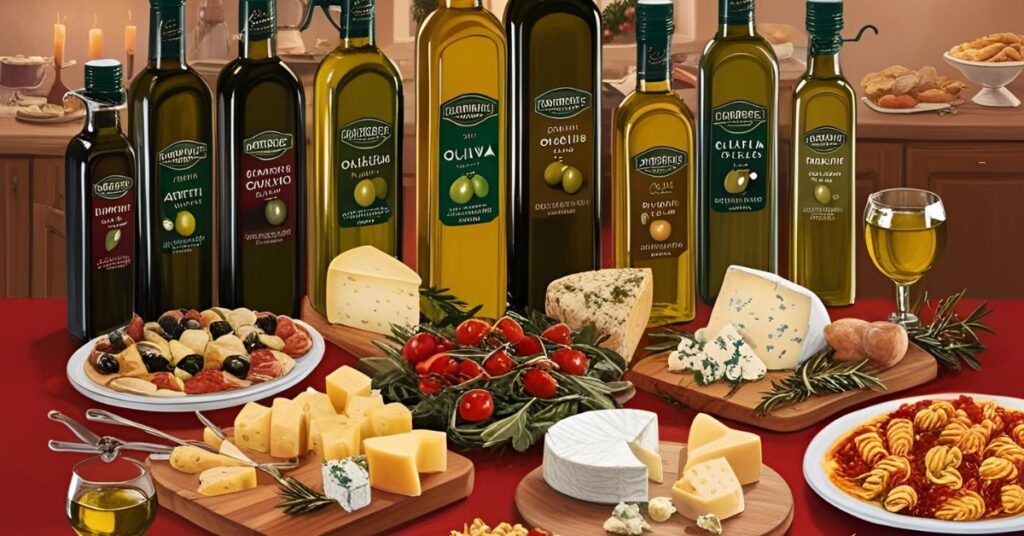
Unlocking Flavor: Food Pairing with Italian Olive Oils

Italy’s culinary heritage is rich with regional nuance, vibrant flavors, and timeless traditions. At the heart of this gastronomic tapestry is extra virgin olive oil (EVOO) — a cornerstone of Italian cooking that offers far more than just a cooking medium. From the peppery oils of Tuscany to the delicate varieties of Liguria, Italian olive oil is as diverse as the food it complements. But how do you choose the right oil for the right dish?
In this guide, we’ll explore the art of food pairing with Italian olive oils to elevate your meals from simple to sublime.
Understanding the Profiles of Italian Olive Oils
Italy’s varied geography and microclimates create distinct flavor profiles in olive oils across its regions:
-
Tuscany: Bold and peppery, with grassy notes and a strong bite.
-
Liguria: Soft and buttery with a mild, sweet almond flavor.
-
Puglia: Fruity, sometimes bitter, with a pronounced green olive taste.
-
Sicily: Robust and herbal, often with tomato leaf or artichoke notes.
-
Umbria: Balanced, slightly spicy, and aromatic.
The flavor intensity of the oil often determines the best food pairing.
Perfect Pairings: What Goes with What?
1. Bold, Peppery Oils (e.g., Tuscan)
-
Pair with: Grilled meats, hearty stews, legumes, aged cheeses.
-
Why it works: These oils can stand up to strong flavors, enhancing depth without getting lost.
-
Try it with: Bistecca alla Fiorentina, Ribollita, or a Pecorino Toscano cheese board.
2. Delicate, Sweet Oils (e.g., Ligurian Taggiasca)
-
Pair with: Fish, shellfish, steamed vegetables, pastries.
-
Why it works: Gentle oils won’t overpower delicate flavors and add a subtle richness.
-
Try it with: Branzino al Forno, focaccia di Recco, or a drizzle over panna cotta.
3. Fruity, Bitter Oils (e.g., Pugliese Coratina)
-
Pair with: Tomato-based dishes, bruschetta, fresh greens.
-
Why it works: The bitterness complements the acidity of tomatoes and the crunch of raw veggies.
-
Try it with: Orecchiette with broccoli rabe, caprese salad, or a classic frisella.
4. Robust, Herbal Oils (e.g., Sicilian Nocellara)
-
Pair with: Pasta, eggplant, grilled vegetables, pizza.
-
Why it works: Earthy and intense, these oils bring out the rustic soul of Mediterranean cuisine.
-
Try it with: Pasta alla Norma, roasted artichokes, or arancini.
Pro Tips for Using Italian Olive Oils
-
Finishing Touch: Use high-quality EVOO as a finishing oil to highlight its raw flavors.
-
Heat Sensitivity: Delicate oils are best uncooked; robust oils can handle light sautéing.
-
Taste Before You Pour: Like wine, olive oil should be tasted — look for balance, aroma, and finish.
-
Storage: Keep it in a cool, dark place in a dark glass or tin to maintain freshness.
Final Thoughts
Food pairing with Italian olive oil is as much about instinct as it is about tradition. Start with the flavor profile of your oil and think about whether your dish needs contrast, enhancement, or balance. Whether you’re drizzling, dipping, or dressing, Italian olive oils add complexity and character to any plate.
So next time you’re cooking, don’t just grab any bottle — reach for one that complements your dish the way a sommelier chooses wine. Your tastebuds will thank you.